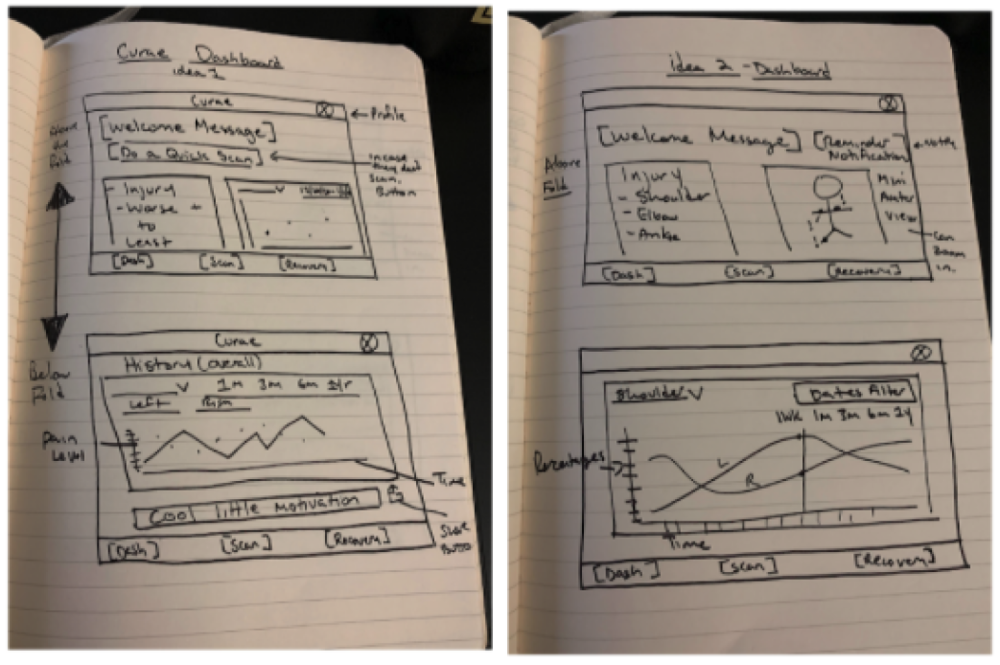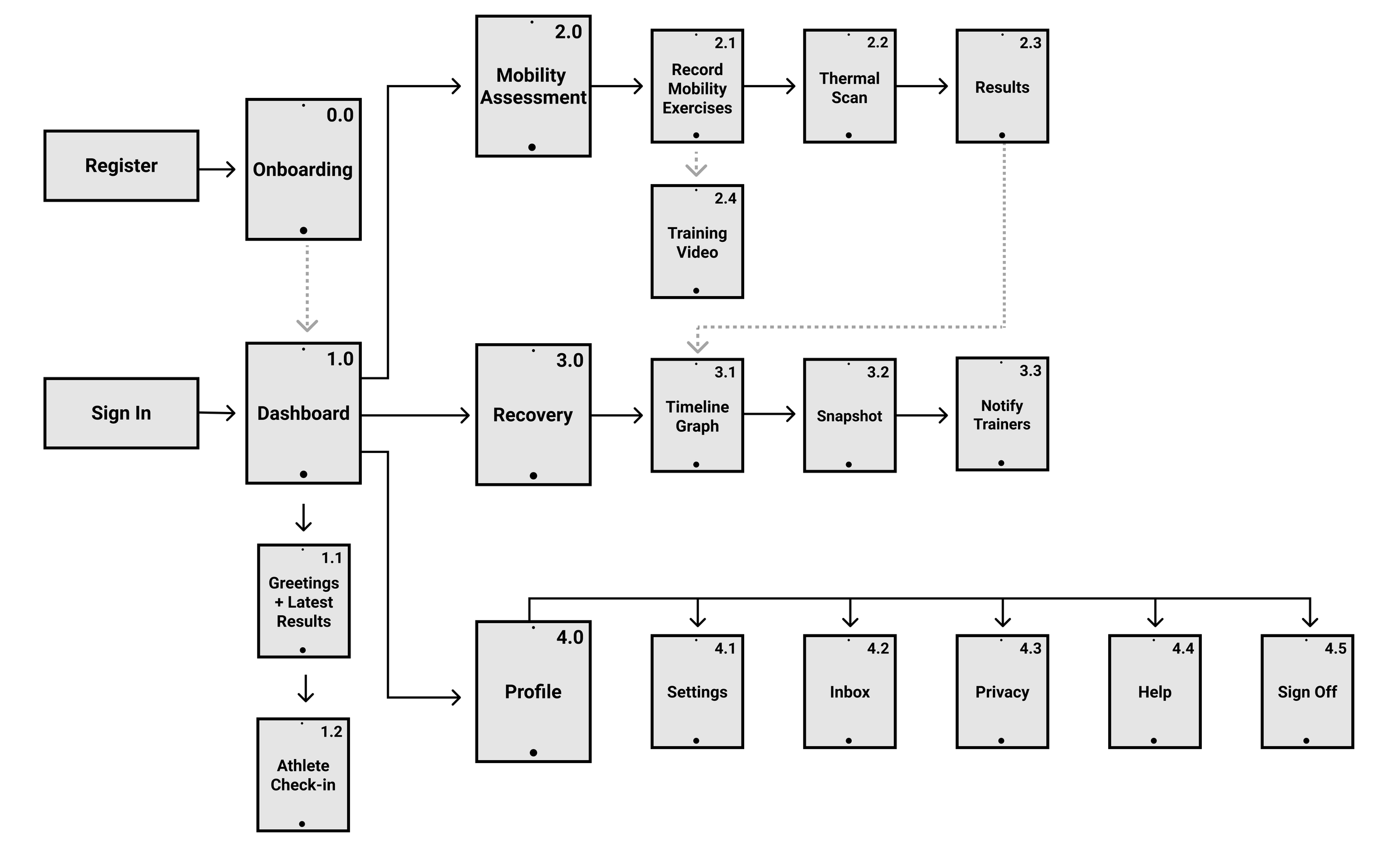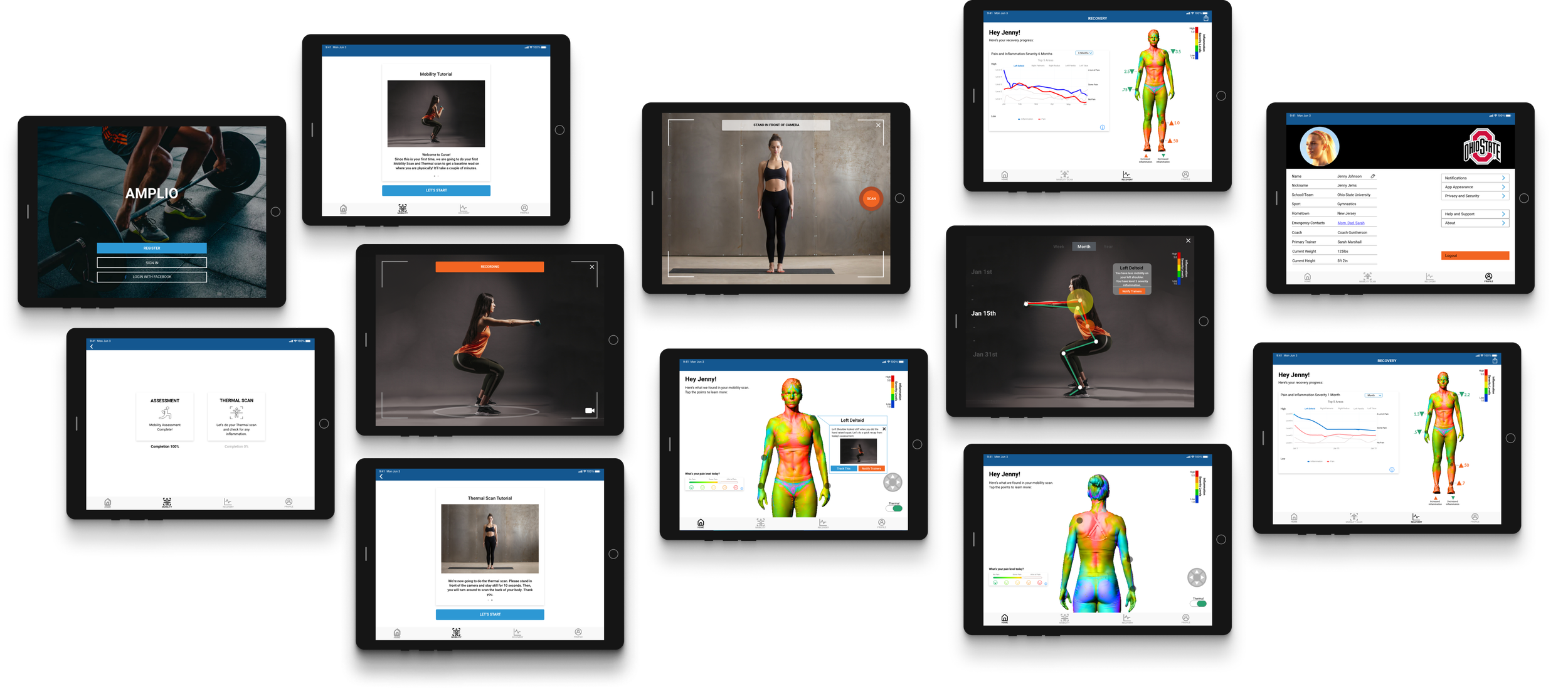Amplio - Health Tech Startup - Research/UX/UI
Keeping Athletes in the Game with Curae
Overview
Amplio, a health tech start up, based in Washington, D.C., is developing a suite of apps for athletes and sports teams in the U.S.
The challenge was to create a concept for one of the apps in the suite, Curae, which would use thermal imaging and A.I. readings to determine potential injuries for athletes. That data would then be uploaded onto the athletes ipad to view later on.
The outcome of the project was a prototype that Amplio could use with real world athletes for further testing.
Role: UX Designer
Responsibilities: UX Research + Synthesis, UX Design, UI Design
Deliverables: Comparative Analysis, User Interview Guide and Findings, Persona, User flows, High Fidelity Prototype
Tools Used: Google Suite, Adobe XD, Trello, Pencil + Paper
TImeline: 12 Weeks
User Research
To gather a better understanding of the app requirements, market fit and the target audience, we conducted:
Stakeholder Interviews with the founder and development team lead to understand how data was gathered from users and ideas on how to convey that information.
User Interviews with 4 Olympic Athletes over Zoom about their training, injury and recovery history.
Competitive Analysis of other apps like Nike App, Pkrs, and Motus One for inspiration and best design practices.
We had learned that many of the athletes had trust issues due to having unhealthy injury/recovery cycle.
They trusted themselves more than anyone else since no one else trusted their judgments/intuitions when they were injured.
Brandon Wynn, Olympic Gymnast
“You want to go as high and as fast as humanly possible. Faster than you’ve ever done it before. You can’t think about getting hurt.”
Ideation + Initial Testing
While converting our findings into potential solutions, we did a few activities to get into the mindset of an athlete and what they would go through since we couldn't interact with athletes in person, due to Covid-19.
Group Brainstorming sessions in person prior to the pandemic and over zoom after the lockdowns.
Role Playing the process of going into a training facility, doing the mobility assessment A.I./thermal scans and looking at an iPad for the results.
User Flows helped us determine the potential screens an athlete would go through from beginning to end when completing certain tasks.
Users in the first round of Usability Testing ran into several flow issues due to constant pop-up modals and confusing design elements.
Usability + Prototype
For the second round, we reworked the prototype by minimizing the popups and confusing information.
We had to really think about our flows but also how this affected engagement with the app. This meant that we had to focus on the app building a relationship with the athlete using accurate data, took their concerns into consideration and looked out for best interest over time.
Takeaway + Impact
With our 2nd prototype, we had 75% completion rate of the tasks tested, up from 25% before.
Conducting the hands-on research and usability testing proved to the be the most useful when it came to refining our design. Having the first hand accounts were key to my understanding.
I’d love to talk more about the project!
I could go on about this project and go into detail about the journey end to end but don’t want to keep you. If you’d like to go more in-depth, let’s schedule some time!




